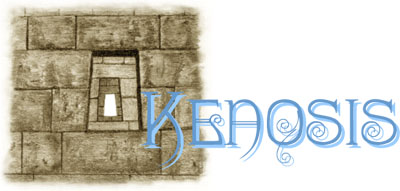

 |
 |
|
|
Wanderings and InspirationBY CARLA WOODY, M.A. If I have an indulgence, it's travel. On second thought, it's not an indulgence at all, but one of the significant ways I care for myself. It serves as a gateway to wider experience of the world — and self-discoveries as well. These are intangibles I can bring home, like souvenirs, even if no one else can see them. But they won't be put away in a drawer or gather dust on a shelf. Instead, they impact who and how I am in the world. But it's not just any kind of travel that has this effect. It's the kind where I choose to step outside time. Having identified specific points in the calendar that the journey will begin and end, with a wide reach in-between, l just let go of any schedules or agendas. So strongly programmed by our culture to have both those things as absolute necessities of life, the residue may linger on for a bit until it clears completely. When the space vacates, it opens a portal toward untold treasures. I've just returned from such a time. My traveling companion and I landed in Villahermosa, Mexico, the arbitrary juncture where this trip began and ended because our plane landed there. Truth be told, the journey began months prior, when we dreamt of possibilities, where we may go, and will likely fade out a long time after I've published this article, if ever. Palenque, Mexico
The village of Palenque holds no real fascination. It's much like countless other villages across Mexico. Stepping off the bus though, I did feel the familiar sense of anticipation. For as we headed out of town in a taxi toward our destination, climbing a bit in elevation, feeling the balmy air soothing my skin, a part of me sighed, "Ahhhh... home again." There was the dirt path alongside the road. Playing over memories of the many different times I traversed there, to and from the ruins, breaking out of the thick, moist rainforest from who knew where, or headed to Mayabel for a cold one in their open-air café, the screams of howler monkeys periodically punctuating the air in early morning or dusk. Turning into the maze cut out of jungle known as El Panchan, a mishmash of cabanas and restaurants hidden down various winding trails, I felt my excitement building. My attraction for the off-beat and unusual was certain to be well satisfied there, but it was much more than that. It was captivation for what was hidden in the tangled mountains a couple of miles up the road — the Maya ruins and what lie deep beyond that. The Palenque ruins, and those of Yaxchilán and Bonampak buried in the rainforest, contain a resonance, one captured through history and brought up through time. Unfortunately to me, things have changed and these places aren't as obscure as they once were, but the vibration endures. Tourists who sprint through won't experience it though. It takes lingering and opening to what these timeless places have to share. It takes immersion. Only then will they offer up their secrets. The Lacandón Maya
It's said that about the same time, the Lacandones moved into the depths of the jungle for similar reasons. Some anthropologists say they fled the Yucatan, while others conjecture that they're the direct descendants of the Maya who built Palenque and other nearby complexes. One thing is sure. Their appearance and form of traditional sacred rituals sets them apart from the Highland Maya. Their creation stories have the familiar ring of what we know from the ancient Maya of that area. For centuries they avoided contact with the outside world, continuing their practices and passing stories down through generations. Lamentably, they weren't hidden enough. Unlike the Q'eros in the extreme height of their arid Andean home, the rainforest of the Lacandones — and their souls — were only too attractive to outsiders with an agenda. In the last several decades, like an infestation of fleas, missionaries and loggers descended. I can feel myself about to step up on a soapbox, but I'll spare the reader that. Suffice it to say, that if I go down that route even a second longer, I'll get instant waves of nausea! So, you get my drift there. Nothing else need be said. Chan K'in Viejo Instead, what I'd like to celebrate are those who remained true and would not sell out. The central guardian of the ancient traditions was Chan K'in Viejo, the spirit holder of the Lacandones, living in the small enclave of Najá, a place, difficult to reach, in the heart of the Lacandón Biosphere. As the vast rainforest was whittled away around him, and more of his people were enticed away by Western trappings, he was steadfast in the virtues his tradition brought him. Quietly tending his crops, feeding the god pots with copal, leading the balché ceremonies and telling stories for those who would still listen, he held to the central truth. "The roots of all things are connected. When a tree is cut in the forest, a star falls in the sky." By the time he left this world in 1996 at the age, some say, of 116 years, he may have sadly marveled there was any light left overhead so open was the view to the heavens! His great concern was also that the Lacandones would have no home and their ancient, esoteric tradition would no longer exist. Trudi Duby Blom Perhaps because of this threat, Gertrude Duby, a photographer, was allowed entry into their closed community. This in and of itself was an anomaly. But what was a lone Swedish woman doing in such a wild land in the 1950s away from polite society and all its accoutrements? Her persuasive powers and intent must have been incredible. Not only was she able to gain acceptance where no gringa had gone, but she persuaded Danish archaeologist Frans Blom to include her on his expeditions when he was adamantly against it. She later married him. From the 1950s until her passing in the late 1990s, she photographed many parts of Lacandón life, thereby documenting people and their traditions, nearly lost to us today. A deep friendship endured. Even today, should any Lacandones venture from their jungle homes to San Cristóbal, they have lodging at Na Bolom, the House of the Jaguar. Once the home of Gertrude Duby and Frans Blom, it's now a museum focusing on the life and traditions of the Lacandón Maya. When my companion and I were in San Cristóbal, we visited Na Bolom, having lingered over the photos and ritual objects. I stood a long time in Duby's small bedroom, looking at her personal items, gazing at her clothing still hung in a wardrobe, imagining what it must have been like to live her life. What inspires me? As we were leaving my friend said to me, "What inspires you?" At the moment he asked, not surprisingly, the same question was in my head. This had been happening a lot on the trip. Who knew who had thoughts first, but just beat the other one to voicing them? I was also noticing the sense of fullness I was feeling in my body, heart warm and open. This, to me, is the internal resonance of what inspires me. Inspiration is what takes us out of the ordinary into the non-ordinary. Inspiration is all around us, especially in nature. It's only non-ordinary because we typically don't notice, but when we do it segues to deep appreciation. These moments are precious. What inspires me? People who stand for what they believe, living an un-prescribed life — unless it's a prescription of their own making. They are fresh and enduring, even if their un-prescribed life is a secret they hold, unknown to the masses, one practiced alone or acknowledged by few. Then there are the places in this world that have invoked inspiration for many. The collective energy is maintained through the intensity of the ageless offerings and the beauty of the land. These things are food for the soul discovered through my own wanderings and with those who consent to accompany me. ©2006 Carla Woody. All rights reserved |
|
info@kenosis.net | |